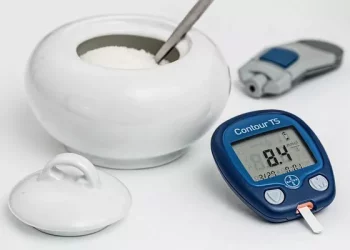Insulin resistance is a condition where the body’s cells become less responsive to insulin, the hormone responsible for regulating blood sugar. As a result, the pancreas produces more insulin to compensate for the reduced effectiveness, which over time can lead to higher blood sugar levels and, eventually, Type 2 diabetes. While genetics and other factors contribute to insulin resistance, diet plays a crucial role in managing and even reversing the condition. Adopting the right dietary approach can help improve insulin sensitivity, maintain blood sugar levels within a healthy range, and reduce the risk of developing diabetes and other related complications.
This article explores the key dietary principles and foods that can help manage insulin resistance, focusing on the types of nutrients, foods, and meal patterns that are most beneficial. We will also delve into the importance of lifestyle changes such as physical activity, stress management, and weight loss in combination with a proper diet.
Understanding Insulin Resistance and Its Impact on Health
Before diving into the specifics of a diet for insulin resistance, it’s essential to understand what happens at the cellular level in insulin resistance. Insulin is a hormone produced by the pancreas that allows glucose (sugar) from food to enter the body’s cells, where it can be used for energy. When a person has insulin resistance, the cells become less responsive to insulin, so the body requires more of it to regulate blood sugar levels. This leads to higher insulin levels (hyperinsulinemia), which may cause fat storage, inflammation, and damage to blood vessels over time.
Insulin resistance is often associated with obesity, particularly abdominal fat, and is a major risk factor for developing Type 2 diabetes. Additionally, it can increase the risk of cardiovascular disease, metabolic syndrome, and other chronic conditions. However, insulin resistance is not a permanent condition. A healthy, balanced diet, combined with regular physical activity and other lifestyle changes, can significantly improve insulin sensitivity and reduce the risk of complications.
The Role of Diet in Managing Insulin Resistance
A balanced and well-structured diet is a cornerstone in managing insulin resistance. The focus of the diet should be on improving insulin sensitivity by reducing insulin spikes, stabilizing blood sugar levels, and promoting healthy weight loss. Research suggests that a diet rich in whole foods, fiber, healthy fats, and lean proteins can have a significant positive impact on insulin resistance.
1. Emphasizing Low Glycemic Index Foods
The glycemic index (GI) measures how quickly a carbohydrate-containing food raises blood glucose levels. High-GI foods cause rapid spikes in blood sugar, which in turn triggers an increased insulin response. For people with insulin resistance, it’s important to focus on low-GI foods that lead to slower, more controlled rises in blood sugar levels.
Examples of low-GI foods include:
- Non-starchy vegetables (e.g., leafy greens, broccoli, cauliflower)
- Legumes (e.g., beans, lentils, chickpeas)
- Whole grains (e.g., quinoa, brown rice, oats)
- Berries, cherries, and apples
On the other hand, high-GI foods such as white bread, sugary cereals, and processed snacks should be limited or avoided. These foods cause blood sugar spikes that can exacerbate insulin resistance and increase the risk of Type 2 diabetes.
2. Including Healthy Fats
Contrary to popular belief, dietary fat does not directly contribute to insulin resistance. In fact, consuming healthy fats in moderation can help improve insulin sensitivity. Healthy fats, especially monounsaturated and polyunsaturated fats, play a role in reducing inflammation, improving fat metabolism, and regulating blood sugar levels.
Some of the best sources of healthy fats include:
- Avocados
- Olive oil and other plant oils (e.g., canola, sunflower, or flaxseed oil)
- Nuts (e.g., almonds, walnuts, and pistachios)
- Fatty fish (e.g., salmon, mackerel, sardines, and tuna) which are rich in omega-3 fatty acids
Omega-3 fatty acids, in particular, are beneficial for insulin sensitivity, as they help reduce systemic inflammation, a common contributor to insulin resistance. Therefore, including these healthy fats in the diet can help improve the body’s response to insulin.
3. Prioritizing Fiber-Rich Foods
A diet high in fiber—particularly soluble fiber—can greatly improve insulin sensitivity. Fiber slows down the digestion of carbohydrates, preventing rapid spikes in blood sugar levels. Soluble fiber also helps reduce fat accumulation in the liver, which can be a major contributor to insulin resistance.
High-fiber foods include:
- Vegetables, especially leafy greens and cruciferous vegetables (e.g., broccoli, Brussels sprouts)
- Legumes (e.g., beans, lentils, chickpeas)
- Whole grains (e.g., barley, oats, quinoa)
- Fruits (e.g., berries, apples, pears, citrus fruits)
A high-fiber diet is not only beneficial for insulin resistance, but it also promotes overall digestive health and weight management.
4. Reducing Refined Carbohydrates and Sugars
Refined carbohydrates and sugars cause rapid spikes in blood sugar and insulin levels. They are also calorie-dense but nutrient-poor, making them a significant contributor to weight gain and insulin resistance. Foods such as sugary snacks, sodas, white bread, pastries, and fast food should be avoided as much as possible.
Instead, it is essential to choose nutrient-dense, unprocessed foods. Whole grains, legumes, and vegetables provide long-lasting energy without causing the rapid insulin spikes associated with refined carbohydrates. Additionally, the fiber content in whole foods helps slow down digestion and improve blood sugar control.
5. Incorporating Lean Proteins
Protein is a vital nutrient for building and repairing tissues, and it also plays a role in stabilizing blood sugar levels. Unlike carbohydrates, protein does not cause rapid fluctuations in blood sugar. Including lean sources of protein in the diet can help improve satiety, regulate blood sugar, and support weight loss efforts, all of which are beneficial for insulin resistance.
Good sources of lean protein include:
- Skinless poultry (e.g., chicken, turkey)
- Fish and seafood
- Eggs
- Plant-based proteins (e.g., tofu, tempeh, edamame, lentils)
In addition to being a source of protein, certain foods like fatty fish (rich in omega-3s) can further reduce inflammation and support insulin sensitivity.
6. Eating Balanced, Frequent Meals
For those with insulin resistance, it is essential to maintain stable blood sugar levels throughout the day. Skipping meals or allowing large periods of time between meals can cause blood sugar to fluctuate, increasing insulin demand. Eating smaller, balanced meals every 3–4 hours is ideal.
A well-balanced meal should include:
- A serving of lean protein
- A serving of healthy fats
- A variety of non-starchy vegetables
- A moderate portion of whole grains or legumes for fiber
This approach helps prevent insulin spikes and promotes better control of blood sugar levels. Additionally, including a protein source at each meal helps stabilize blood sugar and keeps you feeling full longer, reducing the risk of overeating or consuming unhealthy snacks.
Other Lifestyle Factors to Consider
While diet plays a major role in managing insulin resistance, other lifestyle factors can enhance the effects of dietary changes. Incorporating these habits into your daily routine can further improve insulin sensitivity and overall health.
Exercise and Physical Activity
Exercise is one of the most effective ways to improve insulin sensitivity. Physical activity helps the body utilize glucose more effectively, reducing the need for excess insulin. Both aerobic exercises (e.g., walking, jogging, swimming) and strength training (e.g., weightlifting, resistance bands) can have positive effects on insulin sensitivity. Aim for at least 150 minutes of moderate-intensity aerobic activity per week, along with two or more days of strength training.
Weight Management
Excess weight, particularly abdominal fat, is a major contributor to insulin resistance. Losing even a small amount of weight (5–10% of body weight) can significantly improve insulin sensitivity. A healthy, balanced diet combined with regular exercise can help you achieve and maintain a healthy weight.
Stress Management and Sleep
Chronic stress and poor sleep can worsen insulin resistance. High levels of stress hormones like cortisol can increase blood sugar levels, while insufficient sleep can impair insulin sensitivity. Incorporating stress-relieving activities such as yoga, meditation, or deep breathing exercises, and prioritizing good sleep hygiene, can further support blood sugar regulation.
Conclusion
A balanced, nutrient-rich diet is essential for managing insulin resistance and improving overall health. Focusing on low-glycemic, high-fiber foods, healthy fats, lean proteins, and whole foods will help regulate blood sugar levels, reduce insulin spikes, and support healthy weight management. Combining these dietary changes with regular physical activity, stress management, and proper sleep will enhance the benefits of your diet and help you achieve long-term success in managing insulin resistance.
By making thoughtful food choices and adopting a holistic approach to health, it is possible to improve insulin sensitivity, prevent the progression of Type 2 diabetes, and enjoy a healthier, more energetic life.
Related topics:
What Should Sugar Patients Eat?



























